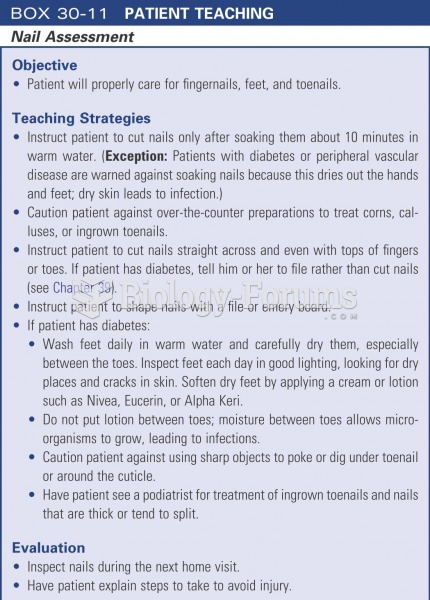|
|
|
A cataract is a clouding of the eyes' natural lens. As we age, some clouding of the lens may occur. The first sign of a cataract is usually blurry vision. Although glasses and other visual aids may at first help a person with cataracts, surgery may become inevitable. Cataract surgery is very successful in restoring vision, and it is the most frequently performed surgery in the United States.
Medication errors are more common among seriously ill patients than with those with minor conditions.
Nearly 31 million adults in America have a total cholesterol level that is more than 240 mg per dL.
Bacteria have flourished on the earth for over three billion years. They were the first life forms on the planet.
The Romans did not use numerals to indicate fractions but instead used words to indicate parts of a whole.







